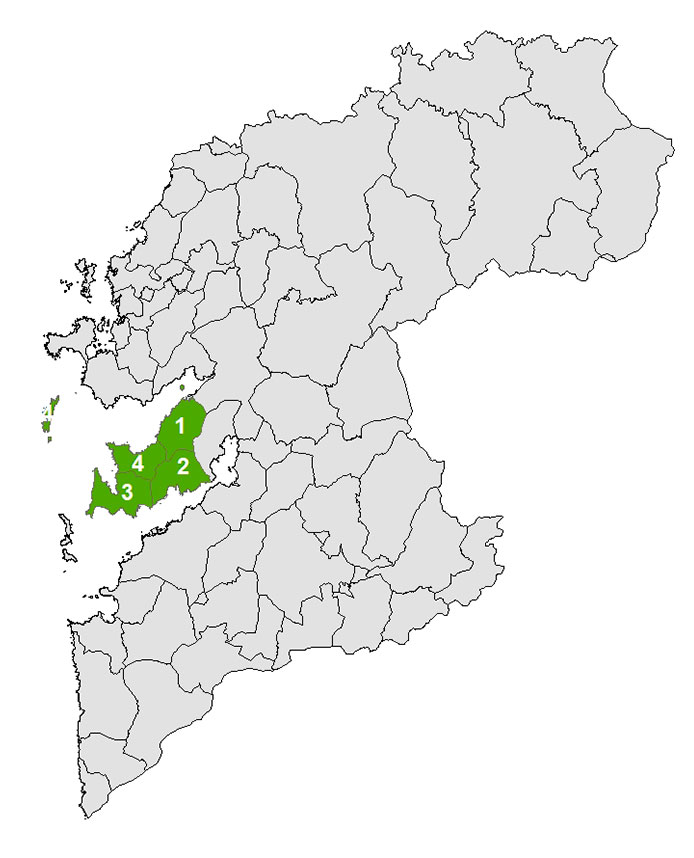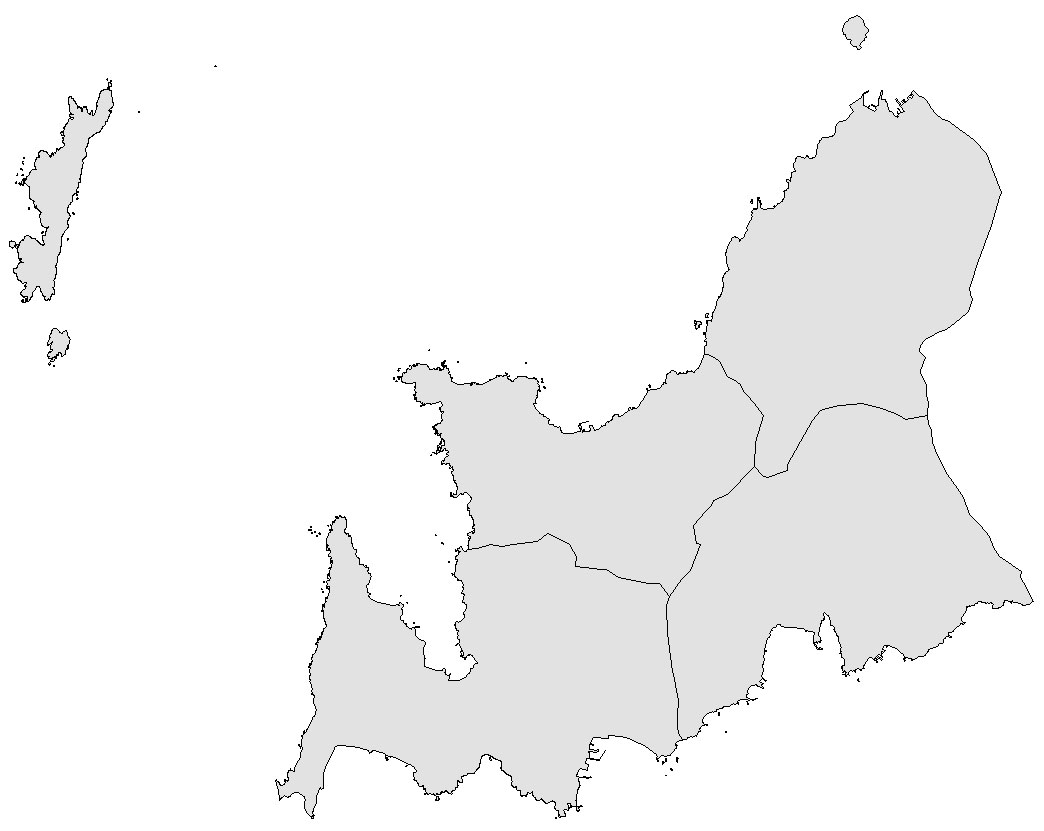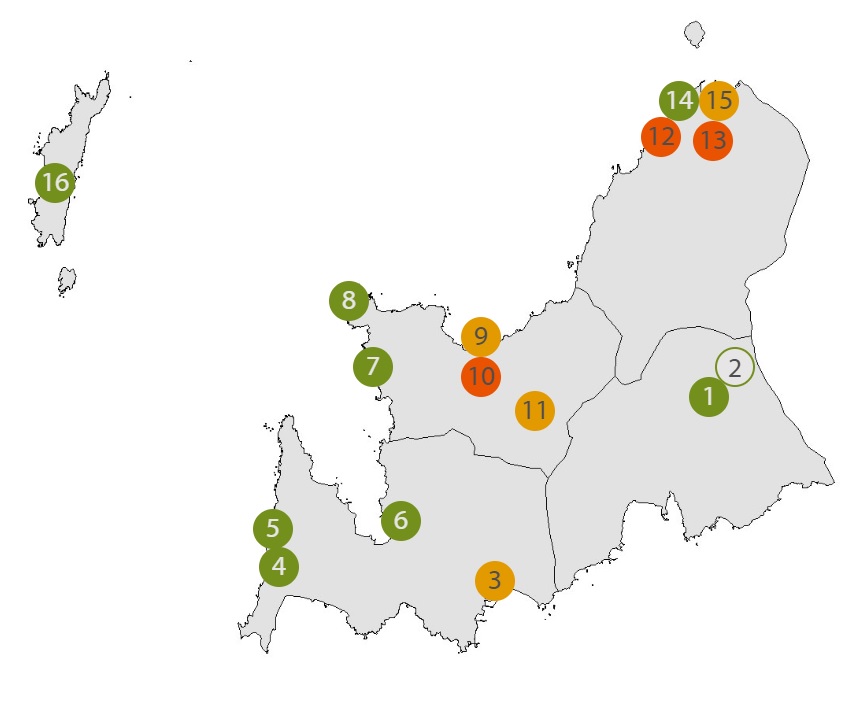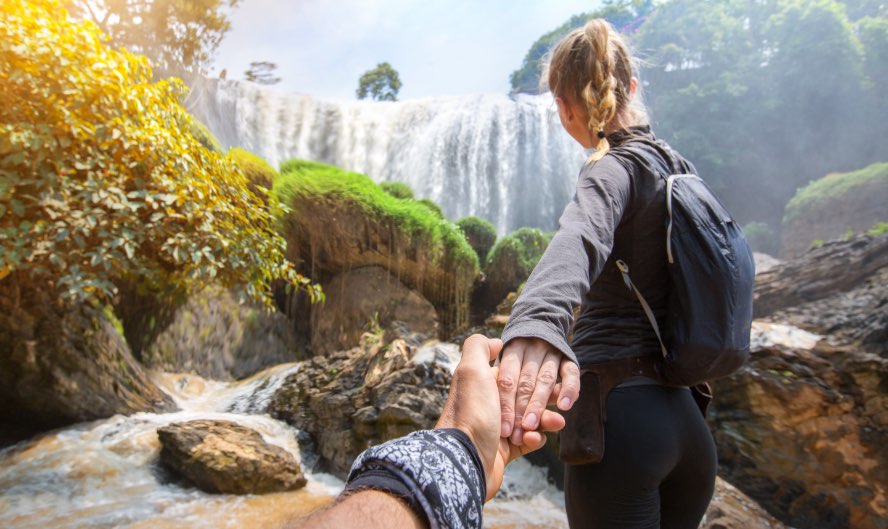07.EXPERIENCE THE REGION OF O MORRAZO
BETWEEN SEA AND LAND
BETWEEN SEA AND LAND
Come and visit O Morrazo, where sea and land meet; a region flanked by the inlets Ría de Pontevedra and Ría de Vigo. A land where you can smell the sea even from the heights of the Domaio Hills, and immersed in an outstanding natural environment, in which dolmens, petroglyphs and castros (pre-Roman hillfort settlements) coexist with a deeply-rooted tradition linked to the sea.
Discover the region of O Morrazo and visit the towns of Moaña, Cangas, Bueu, Marín and their surroundings. O Morrazo Peninsula, between the inlets Ría de Pontevedra and Ría de Vigo, is located in a privileged spot between sea and land.
This area is dominated by the Domaio Hills, in the middle of the peninsula. They are the evidence of the strategic and symbolic importance that this place had in ancient times. Moreover, in O Facho Hill you can admire dolmens, petroglyphs and castros, and even a beautiful shrine from the Iron Age.
Sea has been always part of the identity of this region. If you want to learn about its deep-rooted seafaring, fishing and canning tradition, it is worth visiting the interesting Museo Massó, which provides information about the Massó family, who were the owners of an industrial complex consisting of canning, shipbuilding and fishing rope factories.
You can visit spots with stunning panoramic views, cliffs, calm beaches, unspoiled natural landscapes and hills; a diversity that results in a varied cuisine based on high-quality seafood, vegetables and fruits.

- 1 - Marín
- 2 - Moaña
- 3 - Cangas
- 4 - Bueu


MUSEUMS
-
The museum was created after the visit of Guillermo Marconi to the Massó canning factory in 1928. He suggested opening a museum to display the Massó’s family collection of navigation instruments, documents and books, different objects and scale-model ships, a collection which would be enlarged over subsequent years. Since 1994 this museum has been managed by the regional government Xunta de Galicia, displaying information about the fishing, whaling and canning history of the town of Bueu.
-
It is one of the most important group of petroglyphs in Galicia. The most remarkable ones are those depicting labyrinths, circles, cup marks and a deer. There is also an interpretation centre, which offers information not only about petroglyphs but also about the cultural heritage of the town of Marín and the region of O Morrazo.
-
The museum was opened in 1992. It displays more than 70 painting works by the artist Manuel Torres Martínez that he had donated to the Town Council of Marín. The artist, who was born in Marín in 1901, was highly influenced by the Galician artist Carlos Maside, a good friend of him. The sea and the countryside were sources of inspiration for his works, which have a marked traditional character.
OTHER POINTS OF INTEREST
-
Megalithic funerary monument, built more than 5,000 years ago, which consists of a polygonal chamber and a corridor with big stone slabs. The dolmen used to be earth covered (mámoa). Today, only part of it has been preserved.
CULINARY MOMENTS
-
Festival held in September that pays tribute to the razor shell, a native product caught by the navalleiros (razor shell gatherers) of the fishermen’s association Confraría de San Xosé. Grilled razor shells is the most popular dish, but they are also served chargrilled, scrambled, sautéed or on a toast.
-
Food event held in August where you can enjoy octopus prepared in different ways: in the traditional style (á feira), stew, fried, grilled or in a empanada (typical Galician pie with a savoury filling), or even in more innovative dishes like croquettes or pâté.
-
Festival of Tourist Interest in Galicia, held in April, which pays tribute to the millo corvo (black corn). Decades ago, this product ceased to be used, but this type of corn was cultivated again using traditional techniques in 1998. Different dishes prepared with this type of corn can be enjoyed in this festival.
-
Food event held in July where one can taste langoustine prepared in different ways: boiled, in salpicón (typical seafood salad), in empanada (typical Galician pie with a savoury filling)…
NATURAL SPOTS
-
It is located in a strategic position, at 636 metres above sea level. This lighthouse is the highest point of the hills in the region of O Morrazo. It offers breathtaking panoramic views of As Rías Baixas, the Atlantic Islands, the coastal inlet Ría de Vigo and the hills by the Miño River, which serves as a natural border between Galicia and Portugal.
-
It is the westernmost point of the O Morrazo Peninsula, a beautiful unspoiled landscape surrounded by the sea with pine forests, cliffs and the calm and sandy beaches of Nerga and Barra.
-
It is part of a former public manor house known as Casa Torre de Aldán. It is commonly known as the bosque encantado (enchanted wood); a leafy environment with a trail that follows parallel to the Orxas River down to a mill and a fortified tower of an unfinished castle.
-
On the western coast of the municipality of Bueu, Cape Udra marks the end of the Aldán Bay and the start of the coastal inlet Ría de Pontevedra. It consists of a series of small coves and rocky spots. On the top of the cape (91 metres above sea level), and from the Alto Carafixo (129 metres above sea level) viewpoint, it is possible to enjoy breathtaking panoramic views over the coastal inlet Ría de Pontevedra and the Tambo Island.
-
Area that combines small cliffs and unspoiled natural beaches with a great geological diversity and a rich wildlife. From the cape, you can admire the views over the inlet Ría de Pontevedra, the Ons Island and Punta Couso. The interpretation centre Aula da Natureza provides information about this natural area.
-
An outstanding route that links several itineraries that connect beaches or ports with a Blue Flag, and contribute positively to the sustainable use of the coast. It comprises the following three trails: Ruta das Praias (The Route of the Beaches), Ruta dos Cinco Miradoiros (The Route of the Five Viewpoints) and Ruta Montes e Praias (The Route of Hills and Beaches).
-
The archipelago of Ons, in the coastal inlet Ría de Pontevedra, consists of the Ons Island and other islets, and is part of the Galician Atlantic Islands Maritime-Terrestrial National Park. It is a stunning isolated spot of a rugged beauty, with crystal-clear water beaches, cliffs and woodlands. It can be explored on foot or by bike.
OTHER POINTS OF INTEREST
- Dolmen of Chan de Armada
Megalithic funerary monument consisting of a polygonal chamber and a corridor with big stone slabs. The rooftop is no longer existing.
[+] INFO - Castro of A Subidá
Settlement from the Iron Age, located at the top of the Alto da Porteliña Hill, which survived until the Roman period. It consists of a two-wall defence system, a small oval acropolis and some houses with circular floor. The objects found in the archaeological site evidence an economy based on agriculture and livestock as well as on fishing and shellfish harvesting.
[+] INFO
CULINARY MOMENTS
- Market, port and fish market (Bueu)
It is worth visiting the traditional market of Bueu – with stands selling fresh and seasonal products – as well as the port and the fish and seafood market.
[+] INFO [+] INFO
NATURAL SPOTS
- Cape Cabo Home
It serves as a strategic point and is located near the archipelago of the Cíes Islands. It is dangerous to sail in this area due to the ocean currents, rocky ledges, fog and high waves. There are three lighthouses, one at each end of the cape to warn sailors of the potential dangers.
[+] INFO - Parque dos Sentidos-Granxa de Briz
It was originally an old farm owned by the monks of Oseira. It has a playground area, an adventure park, a natural and an artificial lagoon, an open-air hall and a traditional house with fruit trees, vineyards and local plant species.
[+] INFO - Rodeira Beach (Cangas)[+] INFO

- Ría de Vigo Golf Club (Moaña)[+] INFO














